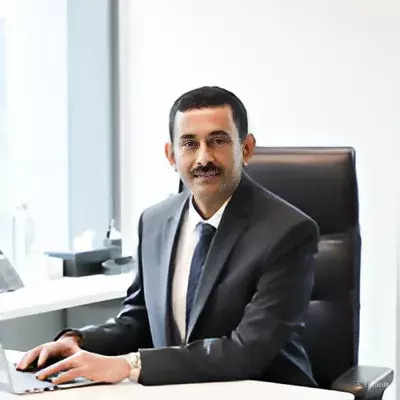
New Delhi: As the automotive industry races to meet the soaring demands for connectivity and real-time interaction, Harman is focusing on integrating advanced consumer technology into vehicle systems. Krishna Kumar, Managing Director of Harman India and Automotive Country R&D Lead, discusses with ETAuto how Harman is at the cutting edge of enhancing in-car experiences. He delves into the company’s strategic approach to developing solutions like its Ready product portfolio, which incorporates advanced infotainment, safety, and personalization features. Kumar highlights how Harman leverages emerging technologies—such as AI, 5G, and machine learning—to redefine human-machine interfaces (HMI) and cockpit design. Through these innovations, Harman aims to meet the evolving expectations of modern drivers, delivering more intuitive, connected, and immersive in-vehicle experiences.Below are excerpts from the interaction.
Q: Harman has been pivotal in driving consumerization in the automotive industry. Can you elaborate on the specific innovations or solutions Harman is currently developing to enhance cockpit experiences and HMI?
As consumer expectations for real-time, connected experiences continue to rise, automakers are under more pressure than ever to offer software-defined vehicles capable of the same connected experiences consumers are accustomed to receiving from their other devices. As a subsidiary of Samsung, Harman is thoughtfully bringing relevant consumer technology innovations into the automotive environment. In particular, new additions to our Ready product portfolio, combine the automotive expertise of Harman with the consumer technology prowess of Samsung to boost safety and personalization for a richer in-cabin experience. Harman’s Ready lineup of road-ready products delivers compelling in-cabin experiences designed to provide specific vehicle safety, well-being, in-cabin entertainment, and connectivity benefits.
Additionally, we recently announced SeatSonic, which is a scalable passenger-centric audio system that delivers exceptional audio performance through the vehicle’s seats.
Q: What are the key trends shaping the future of cockpit solutions and human-machine interface (HMI) in automobiles, and how is Harman contributing to these advancements?
Infotainment, connectivity, security, and connected services are expected to grow at pace with the overall automotive software market, becoming the second-largest software market by 2030. This growth is driven by a high share of connected vehicles and demand for features such as in-car payments, location-based services, and music streaming.
Achieving that level of connectivity is no small task. It requires automakers to completely rethink the underlying electronic architecture of their vehicles while expanding their partner network to include third-party developers, open ecosystem players, and more.
At Harman, we think about development differently. Focused on a balance between product and project, we narrow in on the consumer-first mindset to create synergies that support safer driving and better vehicle solutions. We’re focused on creating road-ready automotive products that can be deployed and make a meaningful impact on consumers today.
Harman products can be deployed singularly, or integrated with one another or with partner technologies, creating richer experiences and expanded capabilities. Harman’s product portfolio delivers experiences that meet consumers’ evolving needs and prepare vehicles for today and tomorrow.
Q: With technologies like 5G, AI/ML, NLP, and cloud computing gaining prominence, how do you see these advancements enhancing the overall car experience? What role does Harman play in integrating these technologies into automotive solutions?
The automotive industry continues to be disrupted by emerging tech breakthroughs—like advanced connectivity, artificial intelligence and machine learning, and electric vehicles, as well as heightened expectations for in-cabin experiences. Harman has leveraged cutting-edge technologies, including AI, AR, ML and more, to expand and evolve its portfolio of Ready products.
Currently, Harman Ready Care offers cognitive load detection, analysis, and classification and then tailors interventions, accordingly, leveraging AI at each stage. Neuroscience, artificial intelligence, and machine learning allow the Harman-designed cameras and sensors in Ready Care to classify a driver’s behaviour into a focused versus a distracted state.
Machine learning and artificial intelligence technology also allow Harman to derive new and more accurate information on the sensing side. Our intervention engine partially uses ML/AI technology to continuously improve the effectiveness of the interventions—in later stages and on a personal level. The Harman algorithms are based on trained neural networks. There is a key focus on related data collection and algorithm training data to ensure the solution is ready for global deployment. This is a continuous improvement approach based on a data-driven process.
Q: Millennials are known to value features and aesthetics in their cars more than previous generations. How is Harman adapting to meet these changing preferences, particularly in terms of technology integration and design?
Beyond constructing crystal-clear displays and amazing sound systems, Harman works to integrate these technologies in a way that creatively optimizes the in-vehicle design and provides the cutting-edge experiences consumers crave. For example, we have reimagined the cabin to streamline busy areas like the dashboard and doors, instead taking advantage of unused real estate on the windshield and seats for tech like Ready Vision QVUE and SeatSonic.
Ready Vision QVUE, the newest addition to the Ready Vision product family, is an HDR-capable display designed to concisely deliver the information most important to the driver—like mileage, speed, driving stats, and alerts—on the underutilized lower portion of the windshield. This allows for easy readability and eyes-forward driving, without obstructing the driver’s view of the road. Ready Vision QVUE’s reflective display is powered by Samsung Neo QLED, which provides an excellent visual experience while being a cost-effective solution for automakers.
Meanwhile, SeatSonic moves speakers from conventional locations, like doors, trunks, and trim panels, into the seats. This puts users at the center of a high-quality, customized listening experience. SeatSonic’s user-centric approach delivers a personal sound subsystem that is flexible, lightweight, and energy-saving for every passenger. By removing door speakers, automakers no longer need to fight for space for things like storage, cup holders, chargers, or media ports. This also means freeing up about 200 cm2 more of uncluttered trim surface area that was previously occupied by sound openings covered with grilles.
Q: Connectivity is becoming increasingly important in vehicles. How is Harman addressing the demand for seamless connectivity solutions in automobiles, and what benefits do these solutions bring to consumers?
Harman has long established itself as a leader in creating more connected infrastructure across the V2X ecosystem. Harman’s latest Ready Connect 5G Telematics Control Unit, for example, leverages state-of-the-art Snapdragon Digital Chassis connected car technologies from Qualcomm Technologies to push connectivity boundaries and democratize the automotive connectivity landscape. With the Snapdragon Modem-RF Gen 2 system, Harman Ready Connect 5G TCU offers unparalleled connectivity, while maximizing upgradability, scalability, and usability to meet the evolving requirements of today’s automotive market.
In collaboration with Traffic Technology Services (TTS), the only commercially available platform offering connected safety and mobility solutions at intersections worldwide, Ready Connect is able to provide real-time traffic information pertinent to a driver’s route, such as traffic light awareness and construction zone warning, without having to rely on in-vehicle sensors.
Q: Personalisation is a growing trend in consumer electronics. How does Harman incorporate personalized experiences into automotive technology, and what customization options does it offer to consumers?
Harman allows drivers to personalize their in-vehicle experiences through services like the Harman Ignite Store. An Android-based in-vehicle app store, the Harman Ignite Store, offers drivers and passengers access to their favorite apps while giving OEMs control over the content catalogue, user interface, and payment engine. Alongside Volkswagen Group’s CARIAD, we recently announced new in-vehicle experiences, including Microsoft Teams and Booking.com, to expand the range of diverse apps available for VW Group vehicle drivers and passengers.

















